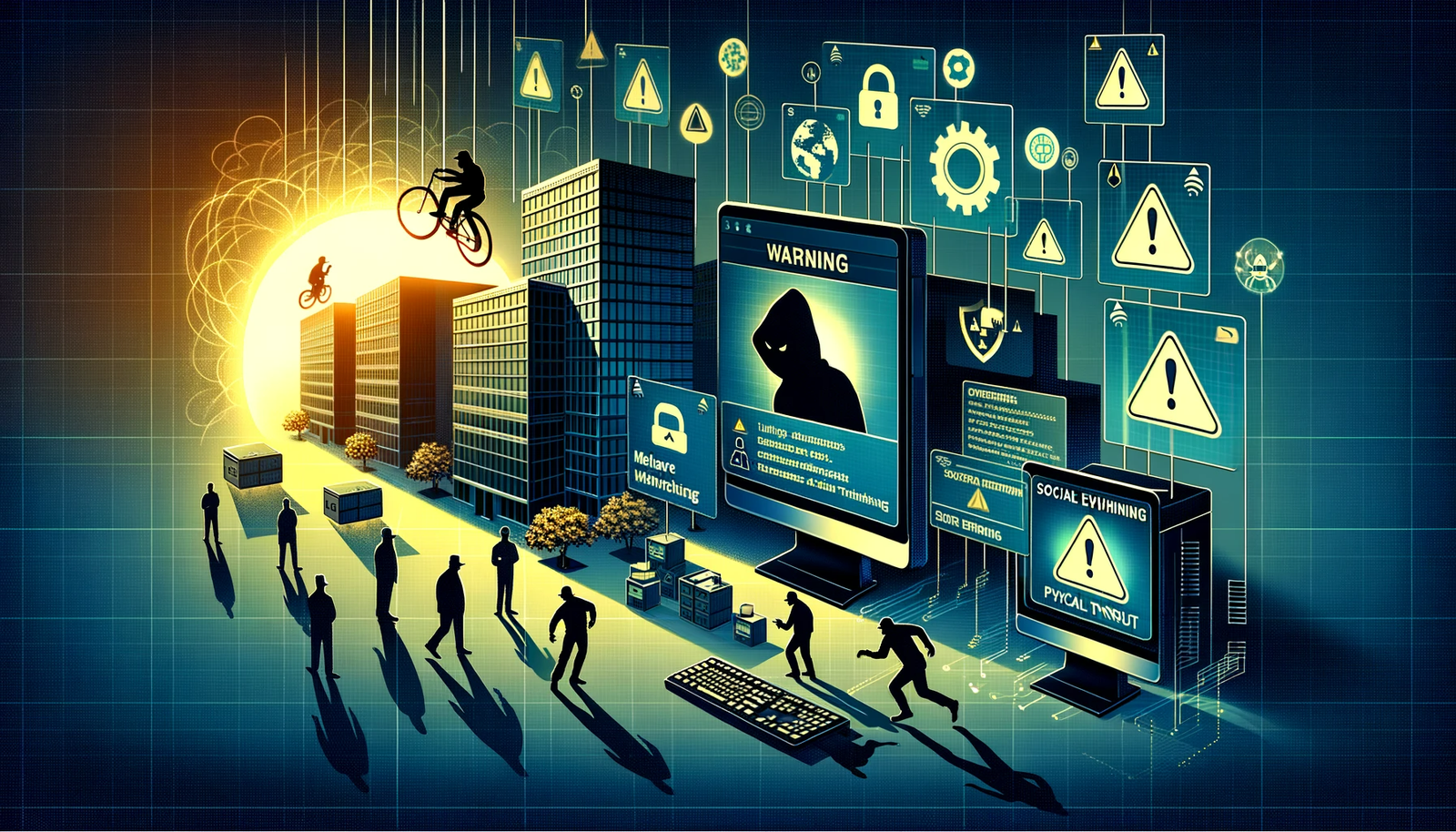
In this article, you will discover how AI can play a vital role in enhancing security measures. With the continuous advancements in technology, the need for better security measures has become more crucial than ever.
By harnessing the power of artificial intelligence, organizations can detect and prevent potential threats in real-time, ensuring a safer environment for both individuals and businesses alike. From facial recognition systems to predictive analytics, AI offers innovative solutions that significantly improve security protocols. So, let’s explore how AI can revolutionize the way we approach security and protect what matters most.

Understanding AI
Artificial Intelligence (AI) is a field of computer science that focuses on developing intelligent machines that can perform tasks that typically require human intelligence. These tasks include speech recognition, decision-making, problem-solving, and learning. AI systems are designed to analyze large amounts of data, identify patterns, and make decisions based on these patterns.
What is AI?
AI refers to the development of computer systems capable of performing tasks that would normally require human intelligence. This can include tasks such as understanding natural language, recognizing images, and making predictions based on data. AI can be further categorized into narrow AI and general AI. Narrow AI refers to systems that are designed to perform specific tasks, while general AI refers to systems that have the ability to understand and perform any intellectual task that a human being can do.
How does AI work?
AI systems work by using algorithms and data to learn and make decisions. These algorithms allow the AI system to identify patterns in the data and make predictions based on those patterns. The more data an AI system has access to, the better it can learn and make accurate predictions. AI systems can be trained using supervised learning, unsupervised learning, or reinforcement learning techniques, depending on the task and the available data.
AI in Security
AI has made significant advancements in the field of security. From preventing physical security breaches to defending against cyber attacks, AI-based security systems have proven to be highly effective. The role of AI in security is to augment human capabilities, provide real-time monitoring and analysis, and enhance the overall security posture of an organization.
The Role of AI in Security
AI plays a crucial role in improving security by automating and accelerating certain security processes. With AI, organizations can detect and respond to security threats in real-time, reducing the response time and minimizing potential damages. AI helps in intelligent video surveillance, facial recognition, and access control systems, making it easier to monitor and secure physical spaces. Additionally, AI-powered cybersecurity solutions can detect and prevent cyber attacks by analyzing network traffic, identifying anomalies, and predicting potential threats.
Benefits of Using AI in Security
There are several benefits to using AI in security. One of the major advantages is the ability to analyze large volumes of data in real-time, allowing for faster and more accurate threat detection. AI-based security systems can also learn from previous incidents and adapt their defense mechanisms to new and emerging threats. Moreover, AI can automate repetitive security tasks, freeing up human resources to focus on more complex and strategic security initiatives. Overall, using AI in security can improve the effectiveness and efficiency of security operations, leading to better protection against security threats.
Types of Security Threats
As technology continues to advance, so do security threats. Organizations face a wide range of security threats that can compromise the confidentiality, integrity, and availability of their data and systems. It is essential to understand these security threats in order to effectively protect against them.
Overview of Security Threats
Security threats can be divided into two main categories: physical threats and cyber threats.
Physical threats refer to threats that can physically harm individuals or property, such as theft, vandalism, or unauthorized access to restricted areas. Cyber threats, on the other hand, refer to threats that exploit vulnerabilities in computer systems or networks, including malware, phishing attacks, and denial-of-service attacks.
Common Types of Security Threats
Some common types of security threats include:
- Malware: Malicious software that can damage or disrupt computer systems, steal sensitive information, or provide unauthorized access to systems.
- Phishing: A technique used by cybercriminals to trick individuals into revealing sensitive information, such as login credentials or credit card details.
- Social Engineering: The manipulation of individuals to gain unauthorized access to systems or information through deception and psychological manipulation.
- Insider Threats: Security risks posed by individuals within an organization who have authorized access to sensitive information or systems, but misuse or abuse that access.
- Denial-of-Service (DoS) Attacks: Attempts to make a computer system or network unavailable to its intended users by overwhelming it with a flood of illegitimate requests or traffic.
- Physical Intrusion: Unauthorized access to physical areas or facilities, posing a threat to the security of personnel, data, or assets.
Understanding these common types of security threats is crucial for implementing effective security measures and utilizing AI-based security systems to detect and prevent them.
AI-Based Security Systems

AI-based security systems leverage the power of artificial intelligence to enhance security measures and strengthen defense against threats. These systems combine advanced algorithms, data analysis, and automation to provide real-time monitoring, threat detection, and response capabilities.
Introduction to AI-Based Security Systems
AI-based security systems encompass a wide range of technologies and applications.
From facial recognition to behavioral analytics, these systems utilize AI algorithms to process and analyze data collected from various sources, including surveillance cameras, access control systems, and network traffic.
The goal of AI-based security systems is to improve situational awareness, detect threats in real-time, and provide proactive responses to ensure the safety and security of individuals and assets.
Features of AI-Based Security Systems

AI-based security systems offer several key features that enhance security operations. These include:
- Real-time monitoring: AI can analyze vast amounts of data in real-time, allowing for the immediate detection of anomalies and potential threats.
- Behavioral analytics: By analyzing patterns of behavior, AI-based security systems can identify suspicious or abnormal activities and raise alerts.
- Facial recognition: AI-powered facial recognition technology can accurately identify individuals, granting access only to authorized personnel.
- Predictive analysis: By analyzing historical data and patterns, AI can predict potential security threats, allowing organizations to take preventive measures.
- Automation and response: AI-based security systems can automate certain security tasks, such as monitoring and incident response, improving efficiency and reducing human error.
AI-based security systems provide a proactive and intelligent approach to security, augmenting human capabilities and ensuring a higher level of protection against security threats.
Application of AI in Security

AI is being applied to various domains within the security industry, enhancing existing security systems and enabling advanced capabilities.
AI in Surveillance Systems
AI has revolutionized video surveillance systems, making them smarter and more efficient. AI algorithms can analyze video feeds in real-time, automatically detecting suspicious behaviors or objects and alerting security personnel. Facial recognition technology is also widely used in surveillance systems, allowing for quick identification and tracking of individuals of interest.
AI-powered surveillance systems provide increased coverage, accuracy, and efficiency, reducing the reliance on human operators and enhancing overall security.
AI in Access Control Systems
Access control systems play a crucial role in physical security, preventing unauthorized access to restricted areas. AI can enhance traditional access control systems by incorporating facial recognition technology or using AI algorithms to analyze and detect anomalies in access patterns. This allows for more accurate and secure access control, ensuring that only authorized individuals can gain entry.
By leveraging AI in access control systems, organizations can improve security, reduce the risk of unauthorized access, and minimize the chances of physical security breaches.
Cybersecurity and AI
Cybersecurity is a critical area where AI has immense potential. The increasing complexity and frequency of cyber attacks require advanced solutions that can detect and prevent threats in real-time. AI-powered cybersecurity solutions provide organizations with the capability to analyze vast amounts of network traffic, identify anomalies, and respond proactively to potential cyber threats.

Using AI to Detect and Prevent Cyber Attacks
AI algorithms can analyze network traffic and identify patterns that indicate potential cyber attacks. By learning from historical data and continuously monitoring network activity, AI systems can detect anomalies and raise alerts when suspicious activity is detected. This enables organizations to take immediate action and prevent cyber attacks before they can cause substantial damage.
AI-Powered Cybersecurity Solutions
AI-powered cybersecurity solutions utilize machine learning algorithms to analyze and predict cyber threats. These solutions can identify new and evolving threats by constantly learning from new data and updating their defenses accordingly. AI can also automate certain cybersecurity tasks, such as vulnerability scanning, threat intelligence analysis, and incident response, allowing security teams to focus on more strategic initiatives.
By employing AI-powered cybersecurity solutions, organizations can enhance their defense against cyber attacks, reduce response times, and ensure the integrity and confidentiality of their data and systems.
Challenges and Limitations
While AI offers significant potential in the field of security, there are also challenges and limitations that need to be addressed.
Ethical and Privacy Concerns
The use of AI in security raises ethical and privacy concerns. Facial recognition technology, for example, can be a powerful tool for security, but it also raises concerns about privacy and individual rights. Striking the right balance between security and privacy is essential to ensure that AI-based security systems are deployed responsibly and ethically.
Limitations of AI in Security
AI-based security systems are not foolproof and have certain limitations. They rely heavily on the quality and quantity of the data they are trained on, making them susceptible to biased or incomplete data. Additionally, AI may struggle with identifying novel or complex threats that it hasn’t been trained on. Human oversight and validation are still necessary to ensure the accuracy and effectiveness of AI-based security systems.
It is crucial to understand and address these challenges and limitations to maximize the benefits and minimize the risks associated with AI in security.
Best Practices for Implementing AI in Security
To successfully implement AI in security, organizations should follow certain best practices to ensure effectiveness and efficiency.
Developing a Comprehensive Strategy
Before implementing AI-based security systems, organizations should develop a comprehensive strategy that outlines their security objectives, priorities, and desired outcomes. This strategy should also consider ethical and privacy considerations, as well as potential limitations and risks. By taking a strategic approach, organizations can align their AI initiatives with their overall security goals and ensure a more seamless integration.
Training and Collaboration
Training and collaboration are key to the successful implementation of AI in security. Security teams should be trained on how to effectively utilize AI-based security systems and understand their capabilities and limitations. Collaboration between security professionals, data scientists, and other stakeholders is essential for optimizing the use of AI in security and addressing any challenges that may arise.
By investing in training and fostering collaboration, organizations can derive maximum value from AI-based security systems and enhance their overall security posture.
Future of AI in Security
The future of AI in security looks promising, with several emerging trends and technologies on the horizon.
Emerging Trends and Technologies
One emerging trend is the integration of AI with Internet of Things (IoT) devices. By combining AI algorithms with the vast amount of data collected from IoT devices, organizations can create more intelligent and proactive security systems. For example, AI can analyze data from smart sensors to detect anomalies in behavior or patterns that may indicate a security breach.
Another emerging technology is the use of natural language processing (NLP) and machine learning algorithms to analyze text-based data, such as social media posts or online forums, for potential threats. By monitoring and analyzing online conversations, AI can identify and predict potential security risks before they escalate.
Potential Developments
In the future, AI may be further integrated into autonomous security systems, enabling them to make real-time decisions without human intervention. This could revolutionize security operations, allowing for faster response times and greater accuracy. Additionally, advancements in AI algorithms, such as the development of explainable AI, can help address concerns around transparency and accountability in AI-based security systems.
The future of AI in security holds great potential for improving the detection, prevention, and response to security threats, leading to safer environments and enhanced protection of assets and individuals.
Conclusion
The integration of AI in security has revolutionized the way organizations approach threat detection and prevention. AI-based security systems provide real-time monitoring, intelligent analysis, and automated response capabilities, enhancing the overall security posture. From physical security to cybersecurity, AI offers numerous benefits, including faster threat detection, improved accuracy, and enhanced situational awareness. Nevertheless, organizations must also address ethical and privacy concerns and understand the limitations of AI in security. By implementing AI-based security systems strategically, training personnel, and fostering collaboration, organizations can maximize the potential of AI and strengthen their defense against security threats. The future of AI in security looks promising, with emerging trends and technologies that will further enhance the effectiveness and efficiency of security operations. With continuous advancements in AI and its integration with other technologies, the security landscape will continue to evolve, offering even greater protection for individuals, organizations, and society as a whole.






